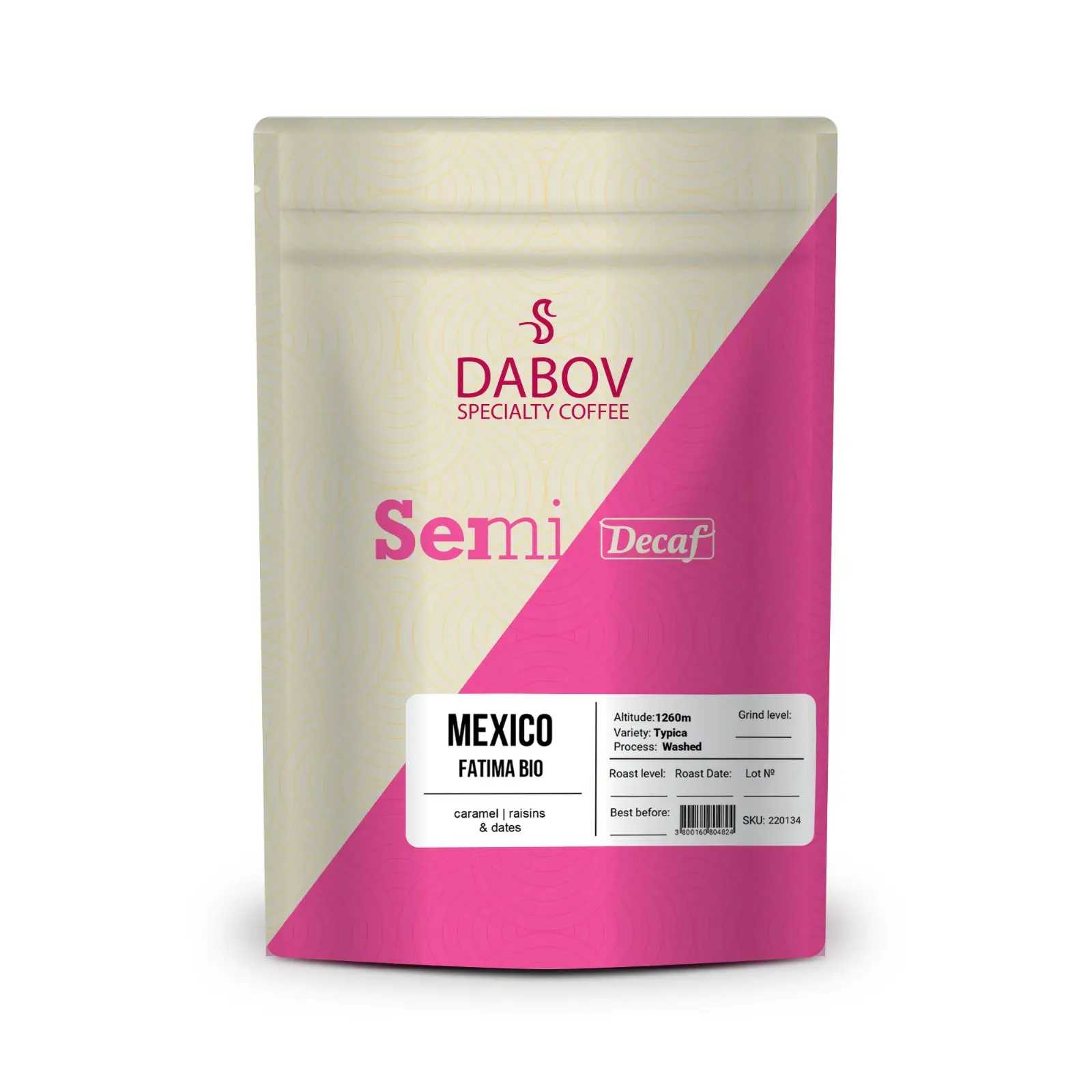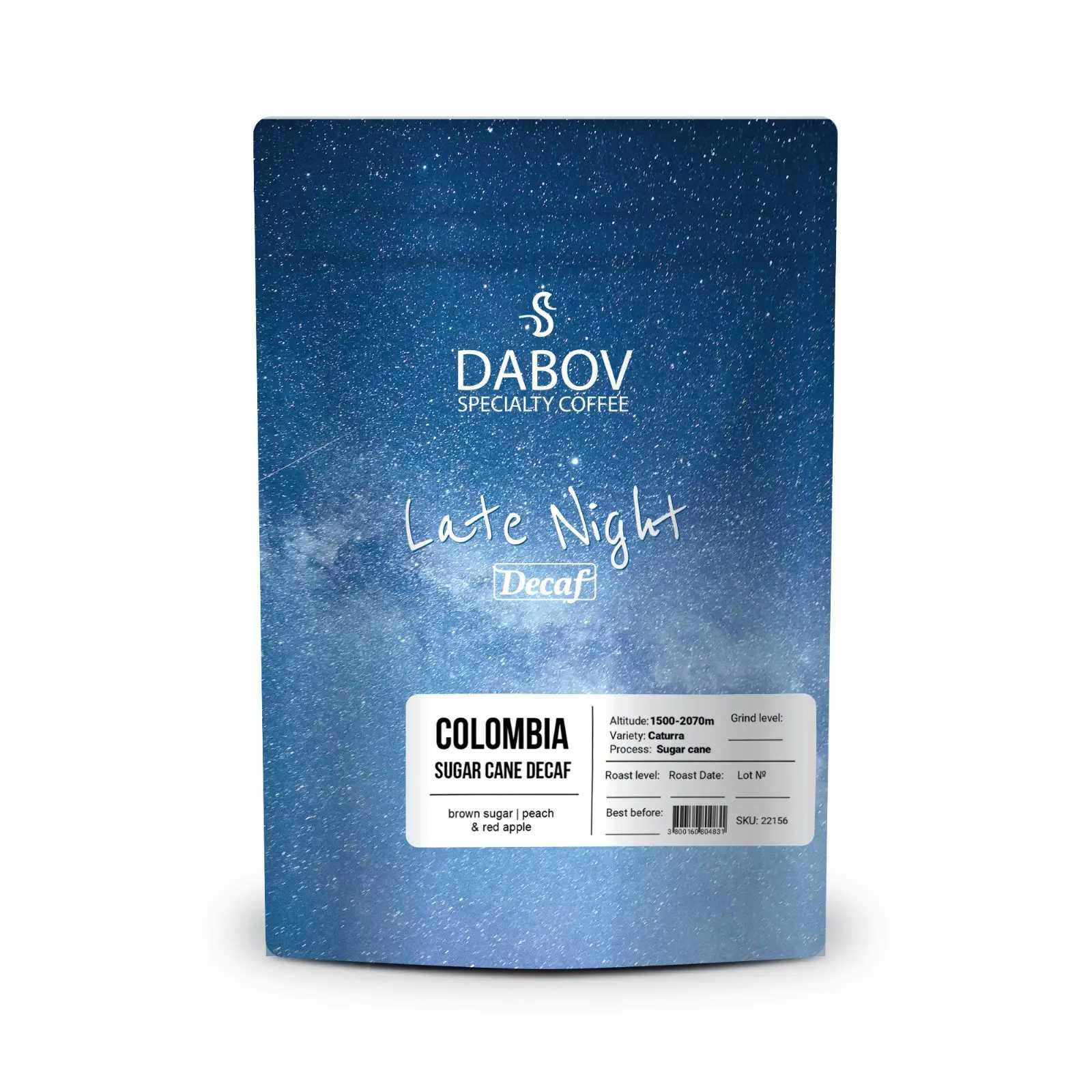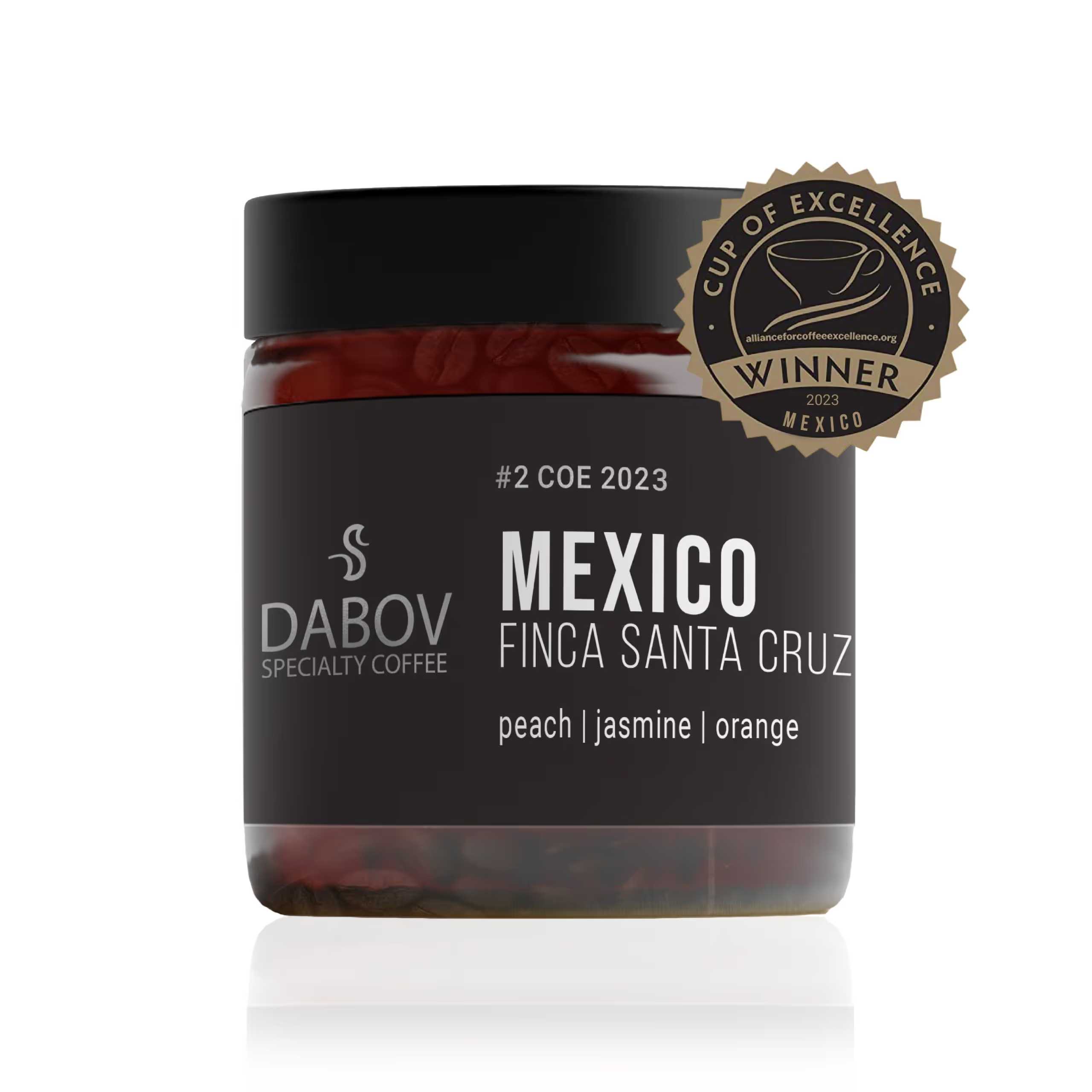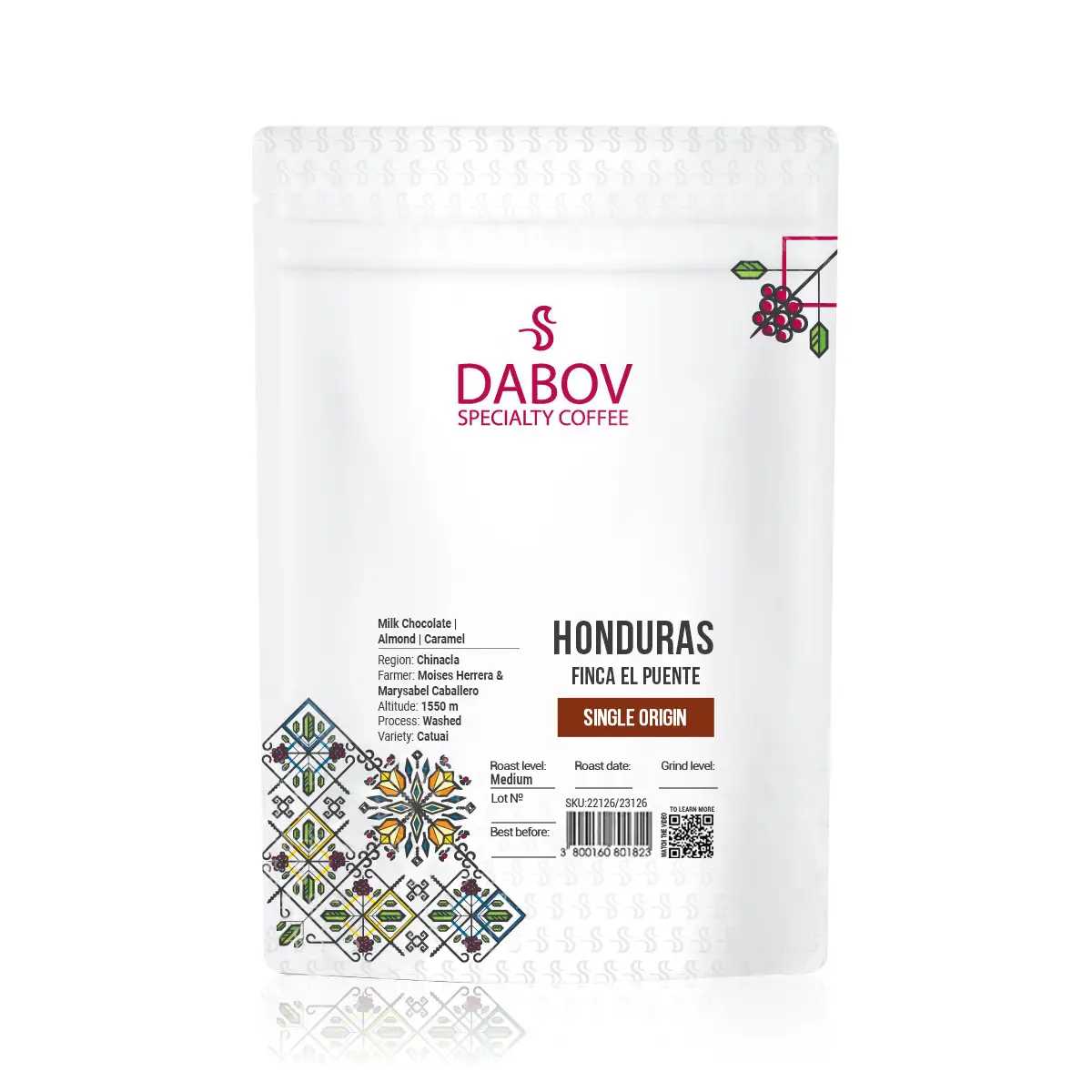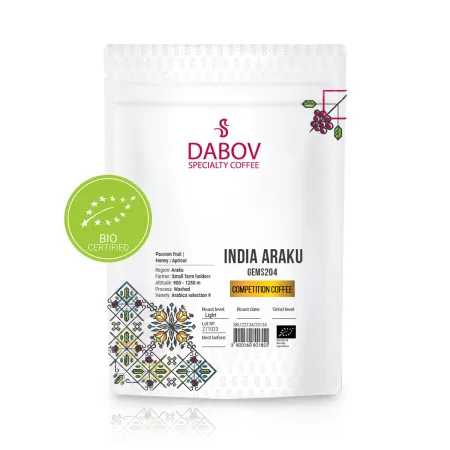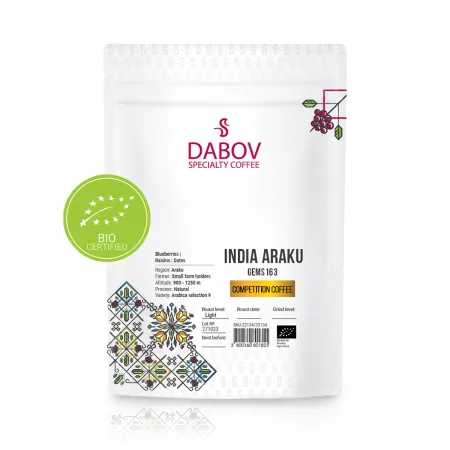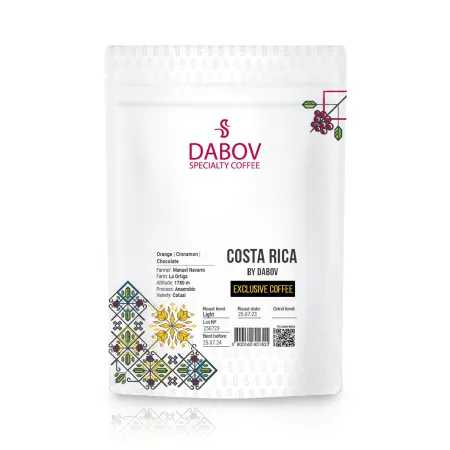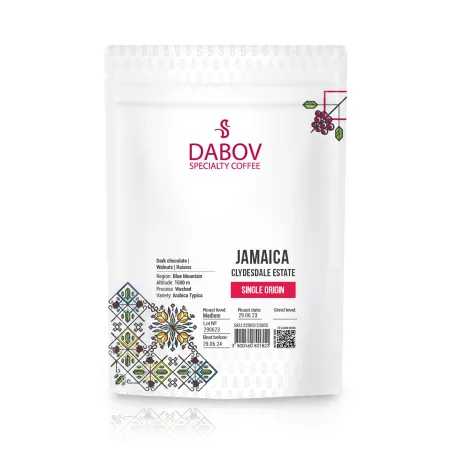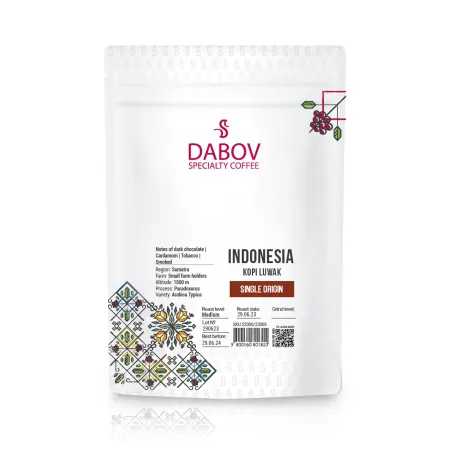Understanding Coffee Aftertaste What It Reveals About Quality
Coffee enthusiasts often overlook the significance of aftertaste, yet it's a key indicator of quality. Coffee aftertaste, or 'finish', reveals essential traits of different brews, enhancing your coffee-tasting journey. In this article, we demystify aftertaste, exploring how it influences your coffee experience and what it reveals about quality. We'll dive into the science behind aftertaste, how brewing methods affect it, and common flavor profiles associated with various coffees. By mastering the art of recognizing aftertaste, you'll elevate your coffee appreciation and tasting skills. Join us as we explore practical tips and the essential role aftertaste plays in distinguishing high-quality coffee from the rest.
Coffee, the beloved beverage that graces millions of cups worldwide each day, is a complex elixir with a myriad of flavors, aromas, and sensory experiences. Among these, one aspect often overlooked by casual drinkers but revered by connoisseurs is the coffee aftertaste. This lingering sensation, which persists long after the last sip, is a crucial indicator of coffee quality and can reveal intricate details about the bean's origin, processing, and brewing method. In this comprehensive exploration, we'll delve deep into the world of coffee aftertaste, uncovering its secrets and learning how it can elevate our appreciation of this timeless drink.
Introduction
What is Coffee Aftertaste?
Coffee aftertaste, often referred to as the "finish" in professional tasting circles, is the sensation that remains on the palate after swallowing a sip of coffee. It's a complex interplay of flavors, aromas, and tactile sensations that can persist for seconds or even minutes. This residual experience is not merely an afterthought but an integral component of the coffee's flavor profile. The aftertaste can be likened to the final notes of a symphony, tying together the entire sensory experience and leaving a lasting impression on the drinker.
The aftertaste is influenced by a multitude of factors, including the coffee's origin, processing method, roast level, and brewing technique. It can range from subtle and fleeting to bold and long-lasting, offering hints of sweetness, acidity, bitterness, or a harmonious blend of these elements. For coffee professionals and enthusiasts alike, the aftertaste serves as a window into the coffee's overall quality and character.
Importance of Quality in Coffee
In the ever-expanding world of specialty coffee, quality has become paramount. Consumers are increasingly discerning, seeking out unique and exceptional coffee experiences. This pursuit of quality extends beyond the initial taste and aroma to encompass the entire sensory journey, with aftertaste playing a crucial role in this evaluation.
High-quality coffee is often characterized by a pleasant, complex, and lingering aftertaste that invites contemplation and appreciation. It can reveal nuances that may not be immediately apparent in the initial sip, such as subtle fruit notes, delicate floral hints, or rich chocolate undertones. Conversely, lower quality coffees may have a short-lived or unpleasant aftertaste, often marked by excessive bitterness or a flat, unremarkable finish.
Understanding and appreciating coffee aftertaste is not just an exercise in connoisseurship; it's a valuable tool for assessing the overall quality of the coffee. It can provide insights into the care taken at every stage of the coffee's journey, from cultivation and processing to roasting and brewing. As we delve deeper into the world of coffee aftertaste, we'll uncover how this often-overlooked aspect of coffee tasting can significantly enhance our appreciation and enjoyment of this beloved beverage.
Section 1: The Concept of Coffee Aftertaste
1.1 Definition and Importance of Aftertaste
Coffee aftertaste, or finish, is a multifaceted sensory experience that occurs after swallowing a sip of coffee. It encompasses the lingering flavors, aromas, and tactile sensations that remain on the palate and in the olfactory system. This residual effect can last anywhere from a few seconds to several minutes, depending on the coffee's quality and characteristics.
The importance of aftertaste in coffee evaluation cannot be overstated. It serves as a crucial component in the overall flavor profile, often revealing complexities and nuances that may not be immediately apparent in the initial taste. Professional coffee tasters and Q Graders (certified coffee quality experts) pay particular attention to the aftertaste, as it can provide valuable insights into the coffee's origin, processing method, and overall quality.
Aftertaste is evaluated based on several factors, including its duration, intensity, and pleasantness. A high-quality coffee typically exhibits a long-lasting, pleasant aftertaste that evolves over time, revealing different flavor notes as it fades. This complexity and longevity are often indicators of carefully cultivated and processed beans.
Moreover, the aftertaste plays a significant role in the overall enjoyment of coffee. A pleasant finish can leave the drinker with a positive lasting impression, enhancing the overall coffee experience. It can also influence the desire for another cup, as a satisfying aftertaste can be both fulfilling and enticing.
1.2 How Aftertaste Differentiates Coffee Quality
The aftertaste of coffee serves as a powerful differentiator of quality, offering discerning drinkers a window into the bean's pedigree and processing. High-quality coffees, particularly those in the specialty coffee category, are often distinguished by their complex and lingering aftertastes. These superior beans tend to leave a harmonious blend of flavors on the palate, which can evolve and reveal new dimensions long after the coffee has been swallowed.
For instance, a high-quality Ethiopan Yirgacheffe might initially present bright, citrusy notes, but its aftertaste could reveal delicate floral undertones of jasmine or bergamot that weren't immediately apparent. This layered complexity in the finish is a hallmark of expertly cultivated and processed coffee beans.
Conversely, lower quality coffees often have short-lived or unpleasant aftertastes. They may leave a bitter, ashy, or simply unremarkable sensation on the palate. This can be due to various factors, including poor cultivation practices, improper processing, over-roasting, or the use of lower-grade beans. For example, a low-quality robusta coffee might leave a harsh, rubber-like aftertaste that quickly becomes unpleasant.
The ability of high-quality coffees to maintain a pleasant taste long after consumption is partly due to their complex chemical composition. These coffees often have a higher concentration of desirable compounds such as organic acids, aromatic oils, and soluble solids, which contribute to a more nuanced and lasting flavor profile.
Furthermore, the aftertaste can reveal specific quality attributes of the coffee. A clean, crisp finish might indicate careful processing and handling of the beans, while a muddled or off-tasting finish could suggest defects in processing or storage. The presence of specific flavor notes in the aftertaste can also provide clues about the coffee's origin and variety. For instance, a lingering cocoa-like finish might be characteristic of certain Central American coffees, while a wine-like aftertaste could be indicative of some naturally processed African coffees.
In the world of coffee cupping and professional tasting, aftertaste is one of the key criteria used to score and evaluate coffees. The Specialty Coffee Association (SCA) cupping protocol, widely used in the industry, includes aftertaste as one of its ten scoring categories. Coffees that score highly in this category often command premium prices and are sought after by specialty roasters and discerning consumers alike.
Understanding how aftertaste differentiates coffee quality empowers consumers to make more informed choices and appreciate the nuances of different coffees. It encourages a more mindful and contemplative approach to coffee drinking, where the experience extends beyond the immediate sip to encompass the evolving flavors that linger on the palate. This deeper appreciation can lead to a more rewarding coffee experience and a greater understanding of the craftsmanship involved in producing high-quality coffee.
Section 2: The Science Behind Coffee Aftertaste
2.1 Chemical Composition of Coffee
The complex and diverse aftertaste of coffee is a direct result of its intricate chemical composition. Coffee beans contain over a thousand different chemical compounds, many of which contribute to the beverage's flavor, aroma, and aftertaste. Understanding these compounds provides insight into why certain coffees leave particular impressions on our palates long after we've finished drinking.
One of the primary groups of compounds responsible for coffee's aftertaste are organic acids. These include chlorogenic acids, quinic acid, citric acid, and malic acid, among others. Chlorogenic acids, which break down during roasting to form other compounds, contribute to the perceived acidity and can leave a lingering brightness in high-quality coffees. Quinic acid, on the other hand, can contribute to a clean, crisp finish in lighter roasts or a slightly astringent aftertaste in darker roasts.
Sugars play a crucial role in coffee's flavor profile and aftertaste. During the roasting process, sugars in the green coffee beans undergo caramelization and Maillard reactions, forming complex flavor compounds. These reactions produce melanoidins, which contribute to the body of the coffee and can leave a pleasant, slightly sweet aftertaste in well-roasted beans.
Oils are another essential component of coffee's chemical makeup. Coffee oils, such as cafestol and kahweol, are largely responsible for the beverage's mouthfeel and can significantly influence the aftertaste. These oils can leave a lingering smoothness on the palate, particularly in coffees brewed using methods that don't filter out the oils (like French press or Turkish coffee).
Caffeine, while primarily known for its stimulant effects, also contributes to coffee's taste profile. It imparts a slight bitterness that can persist in the aftertaste, especially in robusta coffees, which have a higher caffeine content than arabica varieties.
Volatile aromatic compounds are crucial in shaping coffee's aftertaste. These compounds, which include aldehydes, ketones, and pyrazines, are responsible for many of the nuanced flavors we associate with coffee. For example, 2-furfurylthiol contributes to the roasty notes in coffee's aroma and can leave a pleasant, toasty aftertaste.
The presence and balance of these various compounds are influenced by factors such as the coffee's origin, variety, processing method, roast level, and brewing technique. For instance, light roasts tend to preserve more of the bean's original acids and sugars, often resulting in a brighter, more complex aftertaste. Dark roasts, on the other hand, break down more of these compounds and create new ones through extended roasting, potentially leading to a more bitter or smoky aftertaste.
2.2 The Role of Brewing Methods
The method used to brew coffee plays a significant role in determining its aftertaste. Different brewing techniques extract varying amounts and types of compounds from the coffee grounds, leading to distinct flavor profiles and aftertastes.
Espresso, known for its concentrated flavor and crema, often produces a bold, intense aftertaste. The high pressure used in espresso extraction forces out more oils and dissolved solids from the coffee grounds, resulting in a full-bodied drink with a lingering finish. The crema, a layer of emulsified oils on top of the espresso, can contribute to a smooth, sometimes slightly bitter aftertaste.
French press brewing, which involves steeping coarsely ground coffee in hot water and then pressing to separate the grounds, allows more oils to remain in the final cup. This can result in a full-bodied coffee with a rich, sometimes slightly gritty aftertaste. The extended contact time between water and coffee grounds in this method can also lead to a more pronounced bitterness in the finish if not carefully controlled.
Pour-over methods, such as those using a Chemex or V60, typically produce a cleaner cup with a lighter body. The paper filters used in these methods remove most of the oils, resulting in a coffee with a cleaner, crisper aftertaste. This brewing method often highlights the brighter, more nuanced flavors in coffee, which can translate to a complex, evolving aftertaste.
Cold brew, which involves steeping coffee grounds in cold water for an extended period (usually 12-24 hours), produces a smooth, less acidic coffee. The cold extraction process results in a drink with a mellow, slightly sweet aftertaste, often with chocolate or nutty notes more pronounced than in hot brewing methods.
The AeroPress, a relatively new brewing device, combines elements of immersion and pressure brewing. It can produce a clean cup similar to pour-over methods but with a fuller body reminiscent of espresso. The resulting aftertaste is often described as smooth and well-rounded, with the ability to highlight both bright and rich flavor notes depending on the specific technique used.
Turkish coffee, one of the oldest brewing methods, involves boiling finely ground coffee with water and sometimes sugar. This method produces an intensely flavored coffee with a thick body and a strong, lingering aftertaste. The presence of fine coffee particles in the cup contributes to a robust, sometimes gritty finish that can persist for quite some time.
It's important to note that within each brewing method, variables such as water temperature, grind size, coffee-to-water ratio, and brew time can be adjusted to fine-tune the extraction and, consequently, the aftertaste. For example, a longer extraction time in pour-over brewing might result in a more bitter aftertaste, while a shorter time could lead to a brighter, more acidic finish.
2.3 Factors Influencing Aftertaste
The aftertaste of coffee is influenced by a myriad of factors, each playing a crucial role in shaping the final sensory experience. Understanding these factors can help coffee enthusiasts and professionals alike in predicting, controlling, and appreciating the nuances of coffee aftertaste.
Bean origin is perhaps one of the most significant factors. The geographical location where coffee is grown imparts distinct characteristics to the beans due to variations in soil composition, altitude, climate, and local flora. For instance, coffees from Ethiopia are often known for their bright, fruity notes that can translate into a vibrant, wine-like aftertaste. In contrast, Colombian coffees might leave a nutty, chocolate-like finish on the palate.
The variety of coffee plant also plays a crucial role. Arabica varieties, known for their complex flavor profiles, often result in more nuanced and layered aftertastes compared to Robusta, which tends to have a stronger, sometimes harsh finish due to its higher caffeine content and different chemical composition.
Processing methods significantly impact the coffee's flavor profile and, consequently, its aftertaste. Washed (or wet) processing often results in a clean, bright aftertaste that highlights the bean's inherent acidity. Natural (or dry) processing, where the coffee cherry is dried with the bean inside, can impart a fuller body and a fruitier, sometimes fermented note in the aftertaste. Honey processing, a method that leaves some of the fruit mucilage on the bean during drying, can result in a sweet, complex aftertaste that combines elements of both washed and natural processing.
The roasting process is another critical factor in determining coffee's aftertaste. Light roasts tend to preserve more of the bean's original flavors, often resulting in a brighter, more acidic aftertaste with floral or fruity notes. Medium roasts can offer a balance between acidity and body, potentially leading to a well-rounded, smooth finish. Dark roasts typically have a more pronounced bitterness in the aftertaste, often accompanied by notes of chocolate, nuts, or caramel due to the extended caramelization of sugars during roasting.
Grind size is a crucial factor that affects extraction and, subsequently, aftertaste. Finer grinds increase the surface area of coffee exposed to water, leading to more extraction. This can result in a stronger, potentially more bitter aftertaste if not carefully controlled. Coarser grinds, on the other hand, may lead to under-extraction, resulting in a weak or sour aftertaste.
Water quality and temperature also play significant roles. The mineral content of water can enhance or mute certain flavors in coffee. For example, water with higher mineral content might accentuate the body of the coffee, leading to a fuller aftertaste. Water temperature affects the rate and extent of extraction; hotter water extracts compounds more quickly and thoroughly, potentially leading to a more intense aftertaste.
Freshness of the coffee is another crucial factor. Freshly roasted coffee, when properly rested (usually 24-72 hours after roasting), often exhibits a more vibrant and complex aftertaste compared to older coffee. As coffee ages, it loses some of its volatile compounds, which can result in a flatter, less interesting finish.
Lastly, the drinker's palate and personal preferences play a role in perceiving and appreciating coffee aftertaste. Factors such as genetics, smoking habits, and even the foods consumed before drinking coffee can all affect how the aftertaste is perceived and enjoyed.
By understanding and manipulating these various factors, coffee professionals can craft specific aftertaste profiles, while enthusiasts can better appreciate the complexity behind their favorite brews. This knowledge allows for a deeper exploration of coffee's vast flavor landscape, turning each cup into a unique sensory journey.
Section 3: Coffee Flavor Profiles and Aftertaste
3.1 Understanding Flavor Profiles
Coffee flavor profiles are comprehensive descriptions of a coffee's taste, aroma, and sensory characteristics. They serve as a roadmap for understanding and communicating the complex interplay of flavors present in different coffees. These profiles are integral to the coffee industry, used by roasters, baristas, and enthusiasts to describe, compare, and evaluate various coffees.
A coffee's flavor profile is typically described using a combination of taste descriptors (such as sweet, sour, bitter), aroma notes (like floral, fruity, nutty), and mouthfeel characteristics (such as body and acidity). These elements come together to create a unique sensory experience that distinguishes one coffee from another.
The development of a coffee's flavor profile begins at the farm level, influenced by factors such as the coffee variety, growing conditions, and processing methods. It continues through the roasting process, where the roaster's skill in developing the beans' potential flavors comes into play. Finally, the brewing method and technique used by the barista or consumer can highlight or mute certain aspects of the flavor profile.
Understanding flavor profiles is crucial for appreciating coffee aftertaste because the finish often reflects and extends the flavors experienced during the initial taste. For example, a coffee with a flavor profile described as having notes of dark chocolate and cherry might leave an aftertaste that lingers with a subtle cocoa bitterness and a hint of tart fruit.
The Specialty Coffee Association (SCA) has developed a Coffee Taster's Flavor Wheel, a tool widely used in the industry to help identify and describe coffee flavors. This wheel organizes flavors into categories such as fruity, nutty/cocoa, sweet, floral, and spices, among others. Familiarity with this tool can greatly enhance one's ability to articulate and appreciate the nuances in coffee flavor profiles and their corresponding aftertastes.
It's important to note that flavor profiles can vary significantly even among coffees from the same origin due to micro-climate differences, processing variations, and roast levels. For instance, two coffees from the same farm in Ethiopia might have distinctly different profiles if one is naturally processed and the other is washed.
The correlation between flavor profiles and aftertaste is strong but not always straightforward. Some flavors may become more pronounced in the aftertaste, while others may fade quickly. For example, a coffee with a bright citrus acidity in its initial taste might leave a surprisingly sweet, caramel-like aftertaste as the acidity fades.
Understanding flavor profiles also helps in pairing coffee with food, as the aftertaste can interact with and complement different flavors in cuisine. A coffee with a nutty, chocolate-like profile and aftertaste might pair well with a dessert that has similar flavor notes, creating a harmonious taste experience.
For coffee professionals, mastering the art of describing and evaluating flavor profiles and aftertastes is essential. It allows for effective communication about coffee characteristics, aids in quality control, and helps in developing roast profiles that highlight desirable flavor attributes.
For coffee enthusiasts, delving into the world of flavor profiles can significantly enhance the coffee drinking experience. It encourages mindful tasting, helps in articulating preferences, and can lead to a greater appreciation of the diversity and complexity of coffee flavors. As one becomes more adept at identifying and describing flavors, the ability to discern and appreciate subtle differences in aftertaste also improves, adding a new dimension to coffee enjoyment.
3.2 Common Aftertaste Notes
The world of coffee aftertaste is rich and diverse, offering a wide array of sensory experiences that linger on the palate long after the last sip. Understanding common aftertaste notes can greatly enhance one's appreciation of coffee and ability to discern quality. Here, we'll explore some of the most frequently encountered aftertaste notes and the types of coffees that typically exhibit them.
Fruity aftertastes are common in many high-quality coffees, particularly those from Africa and certain Central American regions. These can range from bright, citrusy finishes to rich, berry-like notes. Ethiopian coffees, especially those from the Yirgacheffe region, are renowned for their complex fruit notes that often translate into a lingering aftertaste reminiscent of blueberries or strawberries. Kenyan coffees might leave a bright, almost wine-like finish with hints of blackcurrant or grape.
Floral aftertastes are another hallmark of certain premium coffees. These delicate, aromatic finishes can evoke memories of jasmine, lavender, or rose. Coffees from the Gesha (or Geisha) variety, originally from Ethiopia but now grown in several countries, are particularly noted for their pronounced floral aftertastes. Some washed coffees from Colombia or Panama may also exhibit these elegant floral notes in their finish.
Nutty aftertastes are common in coffees from Central and South America. Brazilian coffees, for instance, often leave a pleasant, almond-like finish on the palate. Coffees from Guatemala or Honduras might have a more complex nutty aftertaste, reminiscent of walnuts or hazelnuts. These nutty notes often combine with chocolate flavors, creating a satisfying, dessert-like finish.
Chocolaty aftertastes are highly prized in the coffee world. They can range from milk chocolate sweetness to dark, bittersweet cocoa notes. Coffees from regions like Colombia, Brazil, and Indonesia often exhibit these characteristics. A Colombian Supremo might leave a smooth, milk chocolate finish, while a Sumatran coffee could have a darker, more intense cocoa-like aftertaste.
Spicy aftertastes can add an intriguing dimension to coffee. These can include notes of cinnamon, clove, or even black pepper. Some coffees from Indonesia, particularly those from the islands of Java or Sumatra, are known for their complex, spicy finishes. Certain Central American coffees, when roasted darker, can also develop subtle spicy notes in their aftertaste.
Caramel or toffee-like aftertastes are often found in medium to dark roast coffees. These sweet, slightly burnt sugar notes can provide a pleasant lingering sweetness. Coffees from Brazil or Colombia are often noted for these characteristics, especially when roasted to bring out their natural sweetness.
Earthy or woody aftertastes are characteristic of certain coffees, particularly those from Indonesia. A Sumatran coffee might leave a finish reminiscent of damp earth or fresh wood, which, when well-balanced, can be quite appealing. Some aged coffees also develop these complex, earthy notes in their aftertaste.
Herbal or tea-like aftertastes can be found in certain light roast coffees, particularly those from high-altitude regions. Some Ethiopian or Kenyan coffees might leave a finish reminiscent of black tea or subtle herbs.
Clean, crisp aftertastes are often associated with high-quality washed coffees. These finishes are characterized by a lack of lingering bitterness or off-flavors, leaving the palate refreshed. Many Central American coffees, when properly processed and roasted, exhibit this clean finish.
It's important to note that these aftertaste notes rarely occur in isolation. More often, they combine to create complex, layered finishes that evolve over time. A single coffee might start with a bright, citrusy note that fades into a sweet, chocolate-like finish, for example.
The presence and intensity of these aftertaste notes can be influenced by various factors, including the coffee's origin, processing method, roast level, and brewing technique. Light roasts tend to preserve more of the coffee's inherent flavors, often resulting in fruitier or more floral aftertastes. Darker roasts might emphasize chocolate or caramel notes in the finish.
Understanding these common aftertaste notes not only enhances one's ability to appreciate different coffees but also aids in selecting coffees based on personal preferences. It allows coffee enthusiasts to explore the vast world of coffee flavors more deliberately, seeking out specific taste experiences and broadening their palates.
3.3 Aftertaste Evaluation in Coffee Tasting
Evaluating the aftertaste is a crucial component of professional coffee tasting, or cupping, as it provides valuable insights into the coffee's overall quality and character. This process requires careful attention, a developed palate, and a systematic approach. Here's a detailed guide on how coffee professionals evaluate aftertaste during tastings.
The first step in evaluating aftertaste is to ensure proper tasting conditions. The environment should be free from strong odors that could interfere with perception. Tasters should avoid wearing perfumes or consuming strongly flavored foods before the tasting. Water should be available for palate cleansing between samples.
The tasting process typically begins with assessing the coffee's aroma, both in its dry and wet states. This sets the stage for the flavors one might expect in the taste and aftertaste. The coffee is then tasted using a technique called "slurping," where the liquid is forcefully sucked into the mouth. This spreads the coffee across the entire palate and introduces oxygen, which helps to volatilize aromatic compounds.
After slurping, tasters will often hold the coffee in their mouths for a few seconds, allowing it to coat the entire palate. This is when the initial flavors are assessed. The coffee is then either swallowed or expectorated (spit out), and this is where the evaluation of aftertaste begins.
The aftertaste is evaluated based on several criteria:
- Duration: How long does the aftertaste persist? High-quality coffees often have longer-lasting aftertastes.
- Intensity: How strong is the aftertaste? This doesn't necessarily correlate with quality, as both subtle and intense aftertastes can be desirable depending on the coffee.
- Complexity: Does the aftertaste evolve over time? Complex aftertastes that change and reveal different notes are often indicative of high-quality coffees.
- Balance: How well do the different flavor components in the aftertaste complement each other? A well-balanced aftertaste is generally more pleasant and is a sign of quality.
- Cleanliness: Is the aftertaste free from off-flavors or defects? A clean finish is typically desirable.
- Pleasantness: Subjectively, how enjoyable is the aftertaste? This can vary based on personal preferences but is still an important consideration.
Tasters will often wait for 30 seconds to a minute after swallowing to fully assess the aftertaste. During this time, they might note how the flavors change, which notes become more prominent, and which fade away.
In professional cupping, tasters use standardized forms to record their observations. The Specialty Coffee Association (SCA) cupping form, for example, includes a specific section for aftertaste, which is scored on a scale from 6 to 10. Tasters are encouraged to consider the length of the finish and how pleasing the aftertaste is in relation to the overall flavor profile.
It's important to note that aftertaste evaluation is not done in isolation. Tasters consider how the aftertaste relates to and complements the other aspects of the coffee's flavor profile. A coffee with a bright, acidic initial taste but a smooth, chocolatey aftertaste might be noted for its complexity and balance.
Developing the ability to evaluate aftertaste effectively requires practice and experience. Many professional tasters keep detailed notes of their tastings, which allows them to refine their palates over time and recognize subtle differences between coffees.
Some specific sensory tips for focusing on aftertaste include:
- Breathing technique: After swallowing or expectorating, some tasters find it helpful to exhale through the nose. This can highlight retronasal olfaction, where aromatic compounds are perceived via the back of the throat, contributing to the overall aftertaste experience.
- Palate mapping: Pay attention to where on the tongue and palate different sensations are perceived. Some aftertastes might be more prominent on the sides of the tongue, while others might linger at the back of the throat.
- Time tracking: Use a timer to note how the aftertaste evolves over time. Some tasters find it helpful to make notes at 30 seconds, 1 minute, and 2 minutes after tasting.
- Comparative tasting: Evaluating multiple coffees side by side can help in discerning subtle differences in aftertaste.
- Descriptive language: Develop a rich vocabulary for describing aftertastes. Tools like the Coffee Taster's Flavor Wheel can be helpful in articulating nuanced perceptions.
By systematically evaluating aftertaste, coffee professionals can gain deep insights into a coffee's quality, origin characteristics, and potential uses. For coffee enthusiasts, adopting some of these evaluation techniques can greatly enhance the appreciation and enjoyment of different coffees, turning each cup into a more mindful and rewarding experience.
Section 4: Coffee Tasting Guide for Aftertaste
4.1 Conducting a Coffee Tasting
Conducting a coffee tasting, or cupping, is an essential skill for coffee professionals and an enriching experience for enthusiasts. When focusing on aftertaste, the tasting process requires careful preparation and a structured approach. Here's a comprehensive guide to organizing and conducting a coffee tasting with a special emphasis on evaluating aftertaste.
Preparation:
- Select Your Coffees: Choose a range of coffees to taste. For a focused aftertaste evaluation, consider selecting coffees from different origins or processing methods to compare their finish.
- Roast Timing: Ideally, use coffees roasted within the last week, but not less than 24 hours ago. This ensures the coffees have degassed sufficiently but are still fresh.
- Grinding: Grind the coffee immediately before tasting. Use a consistent, medium-coarse grind for all samples.
- Sample Preparation: Place 8.25 grams of ground coffee (adjust based on your cupping vessels) in each cup. Prepare at least two cups per coffee for accuracy.
- Water: Use clean, odor-free water heated to approximately 200°F (93°C).
- Equipment: Gather cupping spoons, rinse cups, spittoons, tasting forms, and pens.
- Environment: Choose a well-lit, odor-free room with a comfortable temperature.
Tasting Process:
- Dry Aroma Evaluation: Before adding water, smell the dry grounds and note your impressions. This sets the stage for what you might expect in the taste and aftertaste.
- Wet Aroma Evaluation: Pour water over the grounds, filling the cup. Allow the coffee to steep for 3-5 minutes. Break the crust that forms on top with your spoon and inhale the aroma. This step often provides hints about the potential aftertaste.
- Skimming: After 8-10 minutes of steeping, skim off any remaining grounds from the surface.
- Tasting: Once the coffee has cooled to about 160°F (71°C), begin tasting. Use your cupping spoon to slurp a small amount of coffee, spreading it across your palate.
- Initial Flavor Assessment: Note the immediate flavors you perceive. This will serve as a baseline for comparing with the aftertaste.
- Aftertaste Evaluation: After swallowing (or expectorating), focus on the sensations that linger. Pay attention to:
- Duration: How long does the aftertaste persist?
- Evolution: How do the flavors change over time?
- Intensity: How strong is the aftertaste?
- Pleasantness: How enjoyable is the lingering flavor?
- Time-Based Notes: Make notes at different intervals (e.g., immediately after tasting, 30 seconds later, 1 minute later) to track how the aftertaste evolves.
- Comparative Analysis: Taste each coffee multiple times, comparing the aftertastes between different samples.
- Discussion: If tasting in a group, discuss your perceptions. This can help in identifying subtle notes you might have missed.
- Scoring: If using a formal scoring sheet, assign scores for the aftertaste category.
Tips for Aftertaste Focus:
- Palate Cleansing: Use plain crackers or water to cleanse your palate between samples, ensuring each coffee's aftertaste is evaluated fairly.
- Breathing Technique: After tasting, try exhaling through your nose to enhance retronasal perception, which can reveal additional aftertaste notes.
- Mindful Tasting: Take your time with each sample. Rushing through can cause you to miss subtle aftertaste characteristics.
- Note-Taking: Use descriptive language and be specific about the flavors and sensations you experience in the aftertaste.
- Temperature Consideration: Taste the coffee at different temperatures as it cools. The aftertaste can change significantly as the coffee's temperature drops.
By following this structured approach and paying special attention to the aftertaste, you can conduct a thorough and insightful coffee tasting. This method allows for a deep exploration of how different coffees finish on the palate, providing valuable insights into their quality and character.
4.2 The Role of Palate Cleansing
Palate cleansing plays a crucial role in coffee tasting, especially when evaluating aftertaste. It ensures that each coffee sample is tasted with a fresh perspective, free from the lingering flavors of previous samples. Proper palate cleansing is essential for accurate and unbiased assessment of coffee qualities, particularly the subtle nuances of aftertaste.
The importance of palate cleansing in coffee tasting cannot be overstated. Coffee, with its complex flavor profile and potential for palate fatigue, requires tasters to reset their taste buds between samples. This is particularly crucial when focusing on aftertaste, as residual flavors from previous tastings can significantly influence the perception of subsequent samples.
Effective palate cleansing serves several purposes:
- Neutralizing Residual Flavors: It helps remove any lingering tastes from previous samples, ensuring each coffee is evaluated on its own merits.
- Refreshing Sensory Receptors: Cleansing can help revitalize taste buds and olfactory receptors, which can become desensitized after multiple tastings.
- Maintaining Consistency: By starting each tasting with a clean palate, tasters can maintain a consistent baseline for evaluation throughout the session.
- Enhancing Perception: A cleansed palate is more sensitive to subtle flavor notes, allowing for a more accurate assessment of complex aftertastes.
There are several effective methods for palate cleansing during coffee tastings:
- Water: Plain, room-temperature water is the most commonly used palate cleanser in coffee tasting. It's neutral, readily available, and effective at rinsing away residual flavors. Some tasters prefer sparkling water, as the carbonation can help scrub the palate clean.
- Unsalted Crackers: Plain, unsalted crackers like water crackers or saltines can help absorb lingering flavors and oils



